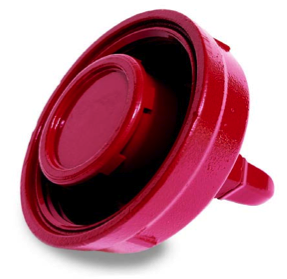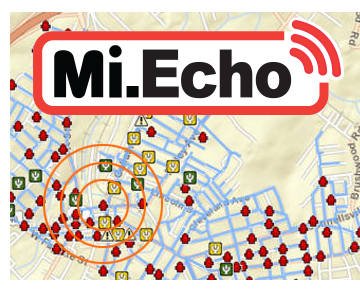Latest in Leak Detection Technology: Mi.Echo
While the possibility of a water leak someday occurring in a building and around its property is nothing new, the technology used today to detect that potential water leak is evolving. Water leaks are serious business. The damage leaks can cause in repair costs, damaged property, emotional stress, and sometimes even physical well-being can be significant.
Undetected leaks can snowball quickly into much more severe problems, which is why improving leak detection methods is so important. When leaks occur in a water distribution system, the damages can expand even more quickly, especially in areas not directly monitored by private homes and businesses. Additionally, this water loss is considered non-revenue water loss (which means you can’t charge for it), but you still have to pay service crews for detection and repair.
Mueller and the Mi.Echo
Mueller Systems has just launched what could possibly be the very best leak detect system to date for water infrastructures- the Mi.Echo. This “smart” and highly-efficient state-of-the-art solution for detecting leaks offers utilities the ability to identify and monitor leaks in water distribution mains remotely.
 The Mueller Systems Mi.Echo seamlessly integrates LeakFinderRT . LeakFinderRT is described as a cutting-edge acoustic-based leak detection technology by the group Echologics. The LeakFinderRT can be easily used out and about in the field to accurately and non-invasively locate distribution main leaks. The mi.Echo combines this detection equipment with Mi.Net; a fixed, two-way advanced metering infrastructure for utilities.
The Mueller Systems Mi.Echo seamlessly integrates LeakFinderRT . LeakFinderRT is described as a cutting-edge acoustic-based leak detection technology by the group Echologics. The LeakFinderRT can be easily used out and about in the field to accurately and non-invasively locate distribution main leaks. The mi.Echo combines this detection equipment with Mi.Net; a fixed, two-way advanced metering infrastructure for utilities.
Integrated Technology
By integrating LeakFinderRT with Mi.Net, the Mi.Echo system enables utilities to precisely pinpoint leaks on distribution mains much more intelligently and cost-effectively. It can detect leaks without having to orchestrate field crews on site, without having to excavate the ground identified as the potential leak site, and without having to resort to all those expensive and time consuming tasks that are typically associated with traditional leak detection methods. Essentially, you know longer have to dig holes on speculation, as the detection ability has a range of 3-6 meters accuracy.
 The Mi.Echo is the 21st century solution to century old challenges with leak detection. The integral component of the Mi.Echo system is in its Mi.Logger technology. A radio frequency transceiver, the Mi.Logger features both sensors and algorithms that are housed in either a high-density plastic or a heavy-duty, cast-iron enclosure. It replaces the pumper nozzle caps of wet and dry barrel fire hydrants within the utility’s service region. This technology collects acoustic data from the pipelines and then wirelessly transmits the data reports to the Mi.Net System’s host software, called Mi.Host.
The Mi.Echo is the 21st century solution to century old challenges with leak detection. The integral component of the Mi.Echo system is in its Mi.Logger technology. A radio frequency transceiver, the Mi.Logger features both sensors and algorithms that are housed in either a high-density plastic or a heavy-duty, cast-iron enclosure. It replaces the pumper nozzle caps of wet and dry barrel fire hydrants within the utility’s service region. This technology collects acoustic data from the pipelines and then wirelessly transmits the data reports to the Mi.Net System’s host software, called Mi.Host.
Potential issues can now be easily viewed online through the Mi.Host user interface that is equipped with special mapping software. Track situations like:
- hydrant tampering
- low flow
- line bursts
- leaks and drips
Benefits
In addition, you can now easily view both the location and the size of the potential leak with the Mi.Echo. This enables you to quickly determine if an immediate repair needs to be executed or if it’s not an emergency after all. Further, you can compare your collected data to the reports transmitted by other Mi.Logger units to identify other alarms or rule out false leak alarms. As an added benefit, here are the company listed benefits of this high tech system: The Mi.Echo system can help utilities:
- Remotely detect leaks
- Reduce water loss
- Improve operational efficiently
- Reduce labor costs
- Prioritize repair projects
- Minimize false leak alarms
The mi.Echo looks to become a great innovation in the leak detection field, focusing on a solution for utilities and infrastructure issues. It could help avoid problems such as the costly issues faced by these cities. To learn more, check out this great animation about Water Leak Detection through Integrated Communication.


